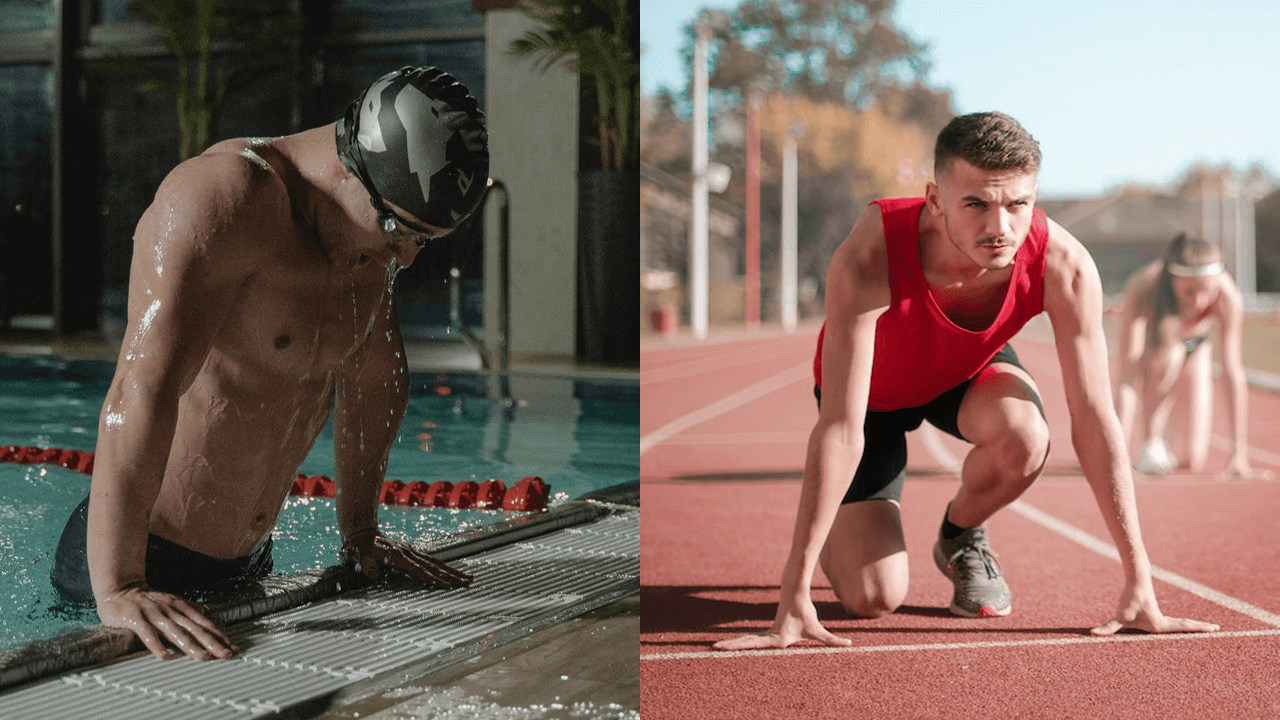Ever wondered why some people excel at swimming and others at running? What exactly makes their bodies so suitable for these strenuous activities that others lack?
Of course, there is a genetic element that one cannot control, such as height and limb length. But no matter what your body type is naturally, you can develop your physique in a certain direction based on the way you train it.
In this article, I want to discuss how a swimmer’s body compares to a runner’s body.
Successful swimmers tend to be tall, with longer arms and torsos, shorter legs, a more muscular upper body, and higher body fat percentage than runners. Runners don’t necessarily need to be tall though it can help for some events but detrimental in others. They tend to have less mass (lower body fat, less muscle), and longer, more muscular legs. Both swimmers and runners can specialize for endurance or power based on the events they are competing in.
As you can see, there are many similarities and differences between these two body shapes, and I will explain them in greater detail below.
Muscle mass
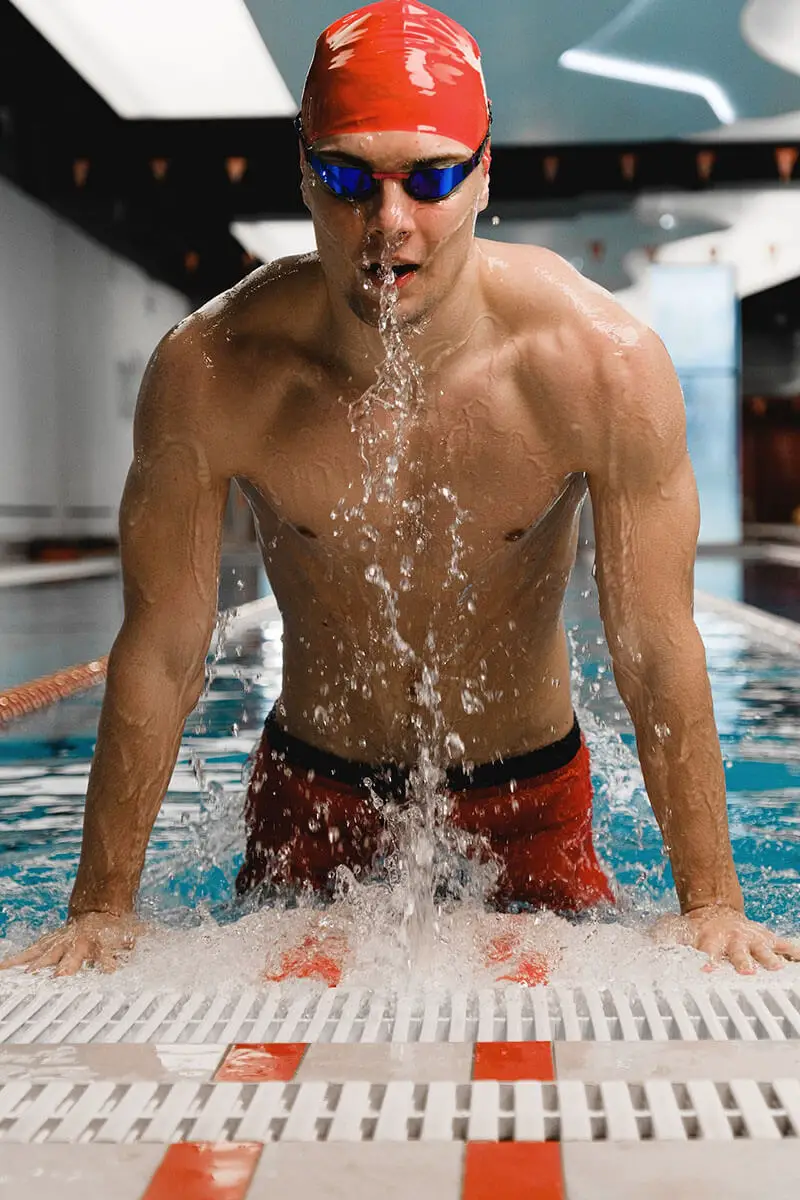
With regards to muscle mass, swimmers tend to have a more muscular upper body whereas runners have more muscular legs.
The muscles primarily used in swimming – chest, back, shoulders, arms, and core – are located on the upper body. These muscles help swimmers pull water with more force per stroke, propelling themselves forward. A strong core is also necessary to stabilize themselves in a horizontal position in the water.
For runners, having a bulky upper body serves little to no benefit. It is just extra weight they have to carry that slows them down. Runners instead work on the muscles of the legs including the quadriceps, calves, glutes, and hamstrings.
These muscles help propel them forward further and faster with each stride. Strong core muscles are also an advantage for runners to maintain good posture and balance. Beyond that, having additional upper body muscle may be detrimental to their sport.
As for who has more muscle mass overall, swimmers take the win here. Swimming is a full body exercise and strong legs are also necessary for swimming to generate powerful kicks. As such, swimmers will train their entire body in the gym, legs as well, so they will have more muscle overall than a runner.
Body fat

When it comes to body fat, between runners and swimmers, swimmers tend to have more body fat. For runners, body fat is considered dead weight that slows them down and they want to shed as much as they can since it serves them no benefit.
For swimmers, it’s not so simple. Obviously it is not good for swimmers to be overweight, however having some fat can be advantageous.
Since swimming takes place in the water where fatty tissue can float, having some amount of fat on swimmers’ bodies means they can stay afloat more effortlessly. Instead of expending energy to stay afloat, they can rely on fat’s buoyancy to take some of the pressure off and spend their energy on their kicks, strokes, and turns.
However, having too much fat quickly leads to diminishing returns. In order to reduce underwater drag (resistance), swimmers want to have as streamlined and narrow of a shape they can.
If they are piling on pounds of fat, their body shape will become more rotund and this increases underwater drag. Even if they can stay afloat more easily this way, it ends up being a net negative for speed so they do not want too high of a body fat percentage.
This point is mostly moot since swimming and running burns approximately the same amount of calories at the same intensity, so both competitive runners and swimmers are quite lean.
However, since swimmers can benefit more from having some fat, they have less pressure to shed the pounds via dieting to be in their leanest possible state, so swimmers will tend to have a higher body fat percentage than runners.
Height
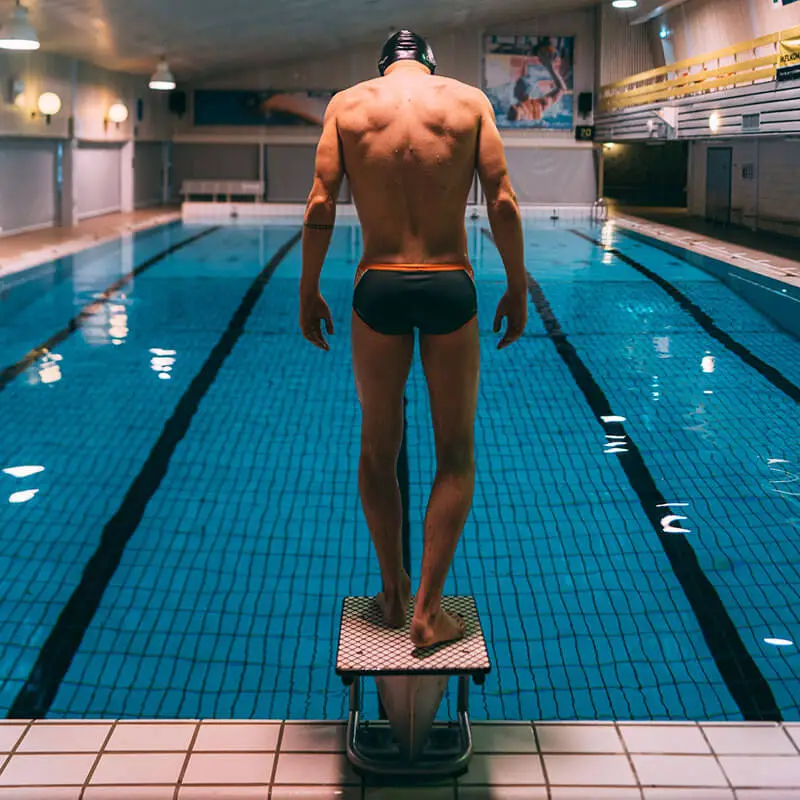
When it comes to height, swimmers tend to be taller because it is extremely advantageous for their sport, whereas it is detrimental for a runner to be tall.
Taller swimmers tend to have bigger hands and feet. Compared to a shorter swimmer, it is like they are swimming with paddles and fins because their big hands and feet can pull so much water.
Having a longer reach also contributes to having a stronger pull and also means a swimmer can touch the wall sooner than someone with shorter arms.
Research has shown that a taller swimmer also experiences less underwater drag even if they are swimming at the same speed as someone shorter than them. That’s kind of a big deal.
With regards to height in running, it is a myth that taller runners have an advantage over shorter ones. Usain Bolt, who is known as the fastest man alive, stands at 6’ 5” which seems to contradict this claim. However, according to physics, it would appear Usain Bolt is the exception, not the rule.
Taller people tend to weigh more than shorter ones, and therefore it takes more explosive force for them to get moving. A shorter sprinter can get started more easily, and even Bolt’s reaction time is infamously slower than the typical sprinter’s. That is why for sprinting, despite Bolt’s success, it is generally seen as a disadvantage to be a tall sprinter.
Medium distance runs are the sweet spot for a taller runner. Here, their height may prove beneficial due to their longer stride. Despite their slower start, a medium distance event such as the 200-meter, 400-meter, 800-meter, and 1,500-meter race allows them to make up for their slow start as they accelerate to maximum speed.
For long distance running, height once again becomes a detriment. Their extra weight causes them to expend their energy much faster than a shorter runner, causing them to lose speed over time and not even having a longer stride can make up for it.
Since height is more likely to be a disadvantage to runners, whereas it is almost always a benefit for swimmers, swimmers tend to be taller than runners.
Lung capacity
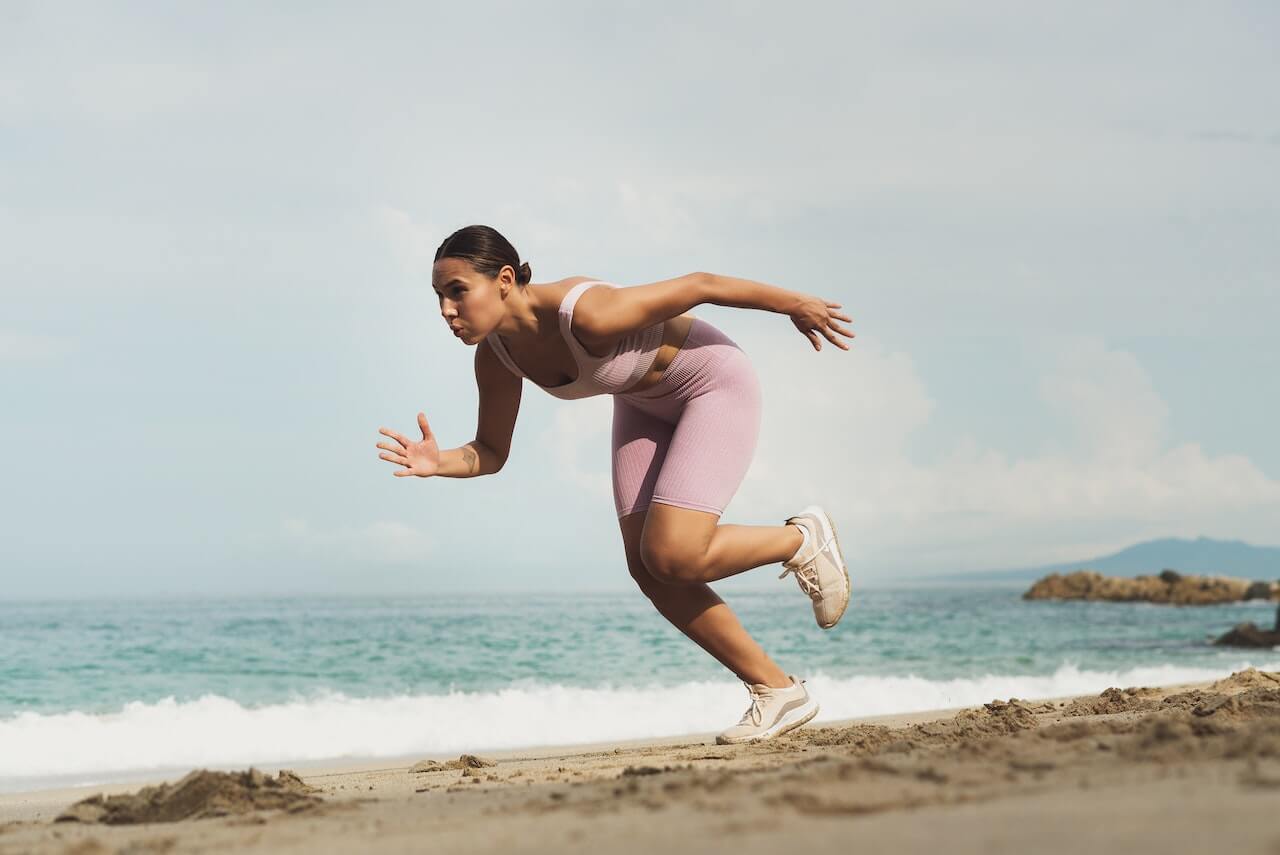
Another important characteristic for both types of athletes is lung capacity. Both swimmers and runners need strong lungs to keep up with their oxygen intake and use during their respective sports.
For swimmers, lung capacity is pivotal so that swimmers can hold their breath for those periods of time when their face is submerged between strokes. Swimming is also an aerobic exercise that uses a lot of energy, so efficient oxygen uptake and delivery to the muscles is critical to continue performing efficient and powerful strokes.
For runners, they need lots of oxygen to sustain their muscles much the same as swimmers. Runners have the luxury of being able to breathe more freely, and having a large lung capacity means each breath can take in more oxygen to maintain higher oxygen saturation levels in their bloodstream. This results in better endurance and performance.
In this area, I feel that both swimmers and runners have incredible lung capacity and I cannot declare a winner.
Flexibility
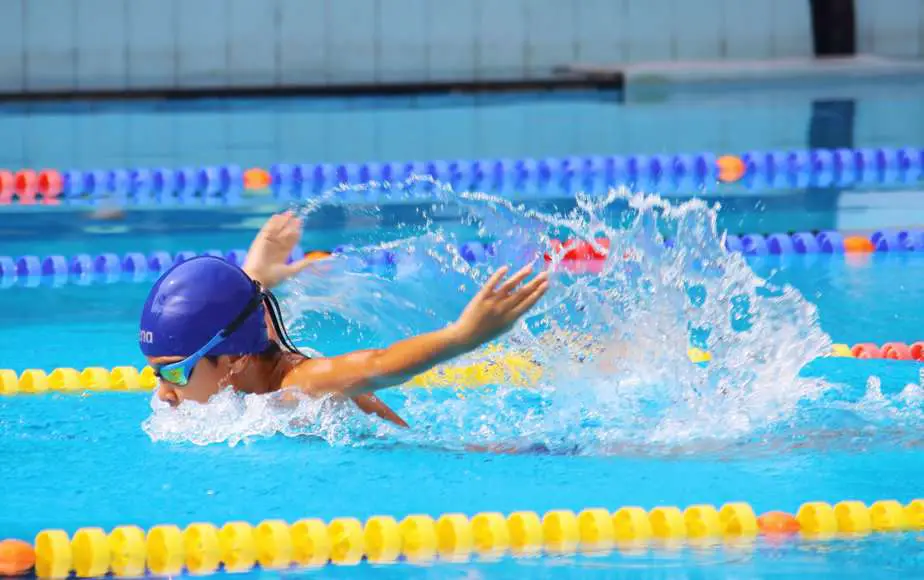
Both sports require the athletes to have excellent range of motion in the body to perform the movements efficiently.
However, I feel that swimmers may have runners beat in flexibility because every single body part is used in swimming and therefore swimmers will strive to be more flexible in all areas.
No matter what stroke a swimmer performs, they need their arms, legs, and torso to be nimble and supple. Good flexibility lets swimmers perform their strokes, kicks, and turns with more grace and less likelihood of injury, resulting in improved performance and less drag.
Flexibility is also important in running to help maintain proper form and avoid injury. That said, the focus is on having more flexible legs. The repetitive motion in the legs and hips from running can cause the muscles to become tight, so runners will stretch all the muscles in their legs, hips, and lower back to keep their lower body supple.
It is not as important for runners to have a flexible upper body, so I feel that swimmers have more flexibility overall.
Endurance vs power
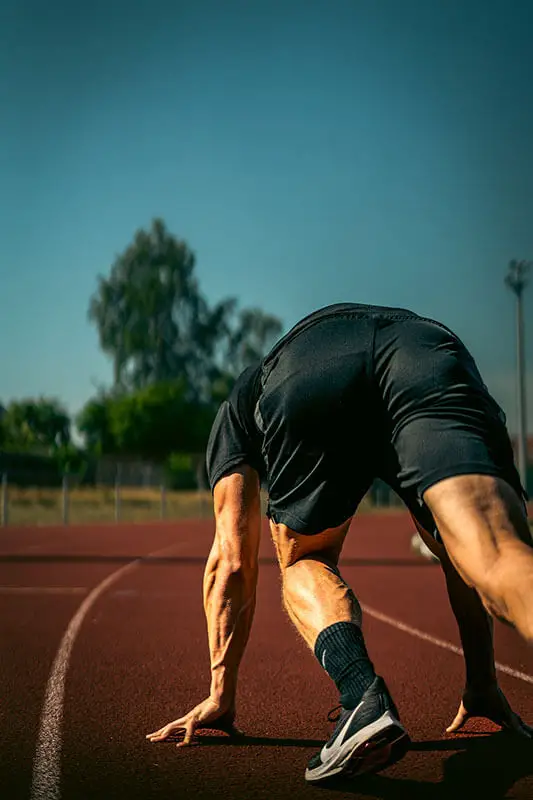
Both swimming and running have shorter distance and long distance events, so both require endurance and power.
Endurance is the ability to sustain prolonged physical activity over a period of time without experiencing excessive fatigue or exhaustion.
For both swimming and running, that is critical for their respective long distance events/triathlon events.
Having a high level of endurance allows athletes to maintain a consistent pace and finish strong.
Power, on the other hand, is the ability to generate force quickly and explosively.
Once again, both sports benefit from this. For swimmers, having more power lets them generate more force per stroke/kick and accelerate out of turns.
For runners, power is vital for sprints and accelerating out of turns. It also helps them run uphill or for that final burst of speed toward the finish line.
Since both sports benefit from endurance and power equally, swimmers and runners both have great endurance and power so it’s a tie in this regard.
Is a swimmer’s body or runner’s body more attractive?
Enough talk about how functional swimmers’ and runners’ bodies are. It’s time to address the topic most people are truly interested in: which one has the more attractive body?
Generally speaking, I would have to say swimmers have the more aesthetically-pleasing, conventionally attractive body shape.
Swimmers tend to be tall and have an all around lean and muscular physique, with low enough body fat that six pack abs are usually visible, yet they are not too bulky like a weightlifter. Note that this physique is achieved through a combination of swimming and weight training, not just swimming alone.
Some potential downsides are that they tend to have longer torsos and arms relative to their lower body. As long as they don’t look comically disproportionate, I don’t think most people would even notice or care.
Runners, particularly long distance runners, are extremely lightweight because it helps them run more efficiently. A runner that is more built will tire more easily and struggle to maintain their speed over a long distance.
As such, most runners tend to look skinny, some even look gaunt, rather than fit. An exception to this are sprinters who have a lot of muscle mass for their explosive power. A sprinter’s physique is more muscular and well-rounded than long distance runners’.
I would argue that swimmers have the more conventionally attractive body, with sprinters a close second, and long distance runners in last place.

